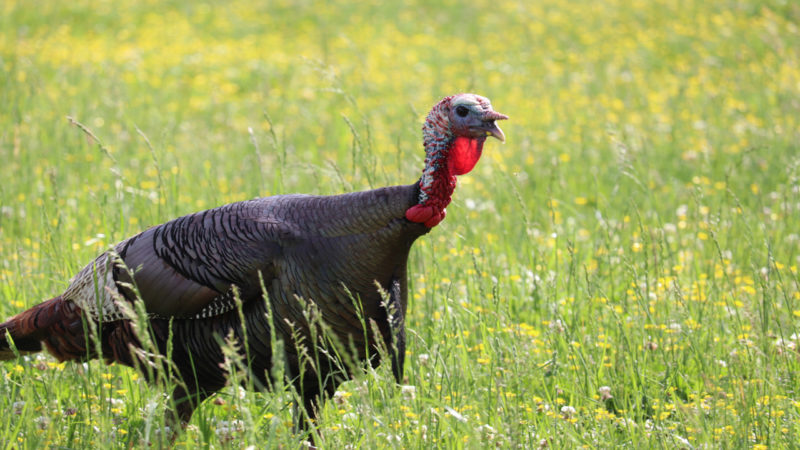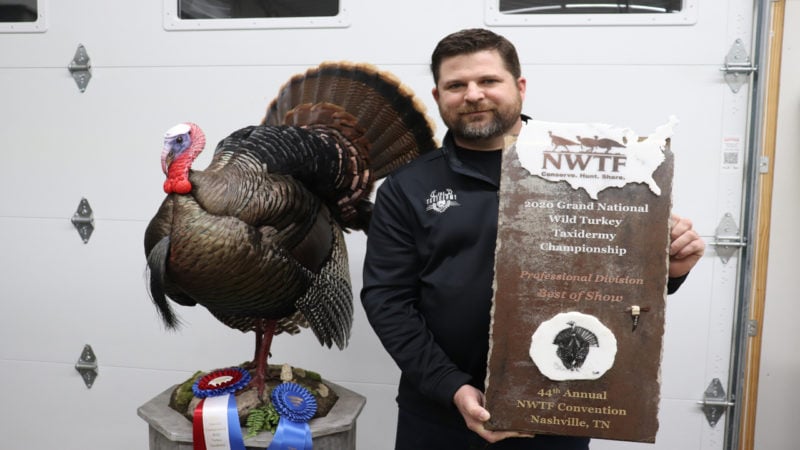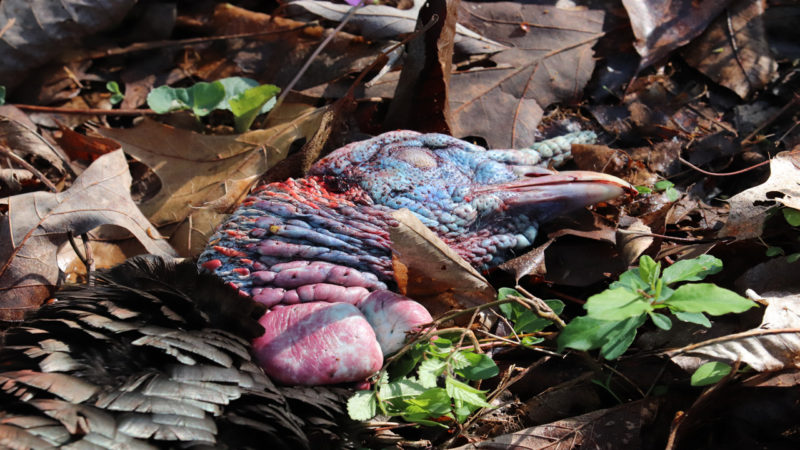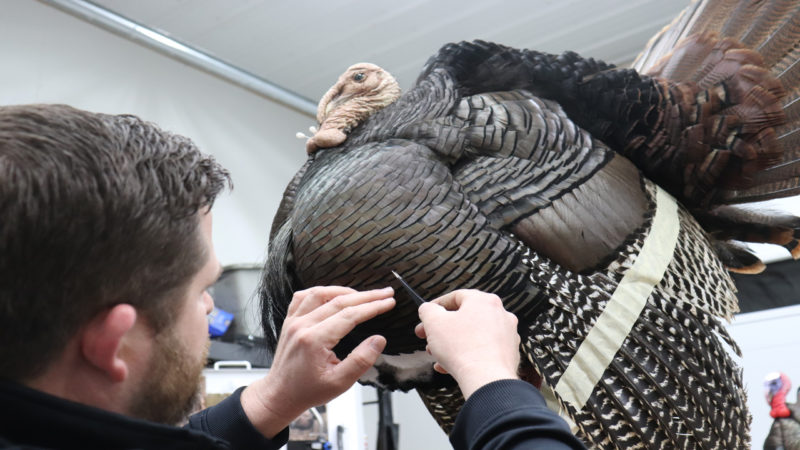No matter how you slice it, putting your tag on a longbeard is about as much fun as one can have in the spring woods. Thunderous gobbles from lovestruck toms, the volley of wingbeats as turkeys depart from their roosts, and the spitting and drumming of a hot-to-trot gobbler that is situated just out of sight, are all sounds that resonate through the dreams of turkey hunters year after year.

Mosquitoes, nor ticks, deter our efforts as we fight a myriad of weather conditions and gobbler thieving hens, to take part in the annual chess match that is spring turkey hunting. Finally, half-exhausted, and a little worse for the wear, we send the fateful shot downrange that spells checkmate for our bronze feathered opposition.
At that very moment, everything is right and well in the world, as we catalog the memory of yet another successful day afield.
Many turkey hunters every year choose to preserve the sanctity of this moment by having their gobbler mounted for display within their homes. However, a significant number of these hunters are not well versed in how to care for their trophy before its delivery to the taxidermist.
According to the 2020 NWTF Turkey Taxidermy Competition Commercial/Pro Division Champion Josh West, poor post-shot care is often one of the primary reasons that some turkey mounts simply do not live up to the expectations of their owners. In fact, West often fills his prospective clients in on key missteps to avoid when preparing their turkey for a trip to the taxidermist.

Not Thinking About Shot Selection
In reality, the care of a turkey that is intended for the taxidermist begins in the seconds leading up to the shot that is to be taken. When bowhunting turkeys, two specific points of aim exist, the body and the head. For West, the latter is the best choice when a trip to the taxidermist is in store.
“I personally prefer shots to the head,” said West. “If I hit, then I hit. If I miss, then I miss. There is little chance of wounding a bird, and headshots aren’t as difficult to fix during the mounting process, as shots to the body,” West continued.
“Most taxidermists don’t use the heads off of that exact turkey, unless of course, a particular turkey’s head has special coloring. In the majority of cases, as long as you don’t shoot below the feather line of the neck, you could take a turkey’s head completely off with a Guillotine Broadhead, and it wouldn’t make any difference at all,” West stated.

Letting Your Gobbler Flop
Another problem that West often sees when turkeys are brought to his shop, is that they are missing segments of feathers due to being allowed to flop about after the shot. Though it can at times seem unconventional, he stresses the importance of holding the turkey off of the ground until all movement has stopped.
“After the shot, run out to your turkey as quickly as you can, grab him by the legs, and hold him in the air while he flops,” West suggests. However, he also stresses safety during this process. “If you can think about it, I recommend taking your gloves off, because nearly everyone has had a spur get tangled up in a glove and been cut badly before, so it is best to prevent this if possible”
Not Keeping Blood Off Of Feathers
One of the most important, yet overlooked aspects of post-shot care stressed by Josh West, is that of going the extra mile to keep the spread of blood onto feathers to a minimum. While it can indeed be difficult to keep the spread of all blood at bay, a little bit of effort can yield a sizable difference in the quality of your finished mount.
“Before you go hunting, I recommend you get a gallon Zip-Lock bag, three or four paper towels, a small roll of electrical tape, and a trash bag,” said West. The paper towels and electrical tape can be placed within the gallon Zip-lock bag, which can then be placed into the folded garbage bag, for ease of storage in a vehicle, or turkey vest.

“Once you have shot your turkey, you can open his mouth and place one to two pieces of paper towel down the bird’s throat. This helps soak up the blood from the shot when packing the bird out.
You will then wrap another paper towel around the turkey’s head, where it will usually stick in place. Now take your Zip-lock bag and place it over the turkey’s head where it will be taped in position. By doing this, you are containing the turkey’s head and keeping blood from spreading to the feathers,” West said.
You will now carefully place your turkey into the garbage bag that had previously held your Zip-lock bag, paper towels, and electrical tape. “Don’t ever place a turkey straight in your vest, because once you get him in the vest, you have to get him back out. When you try to get him out the feathers want to drag back, bend, and break,” West continued.
“That’s why you have a plastic bag. When you place the turkey into the bag, make sure that all of his feathers are groomed down flat, and fold the bag over while forcing out any air,” said West.
Josh West explained why blood is a turkey taxidermist’s worst nightmare by saying, “Blood is your enemy, and you do not want it on the bird, because when you freeze it, the blood will pit the feathers.” Josh also says, “The turkey will still mount up. It will just not be of the quality of one that is pristine.”
Help Your Taxidermist Help You
This season, if you find yourself standing over a freshly tagged gobbler, bound for the taxidermist, do not overlook the value that proper post-shot care plays in the overall quality of the finished product.
By slowing down and taking a few minutes to prepare your turkey as described, you will be affording your taxidermist the best possible opportunity to provide you with a mount that you will reflect fondly upon with every glance.

 By
By 



